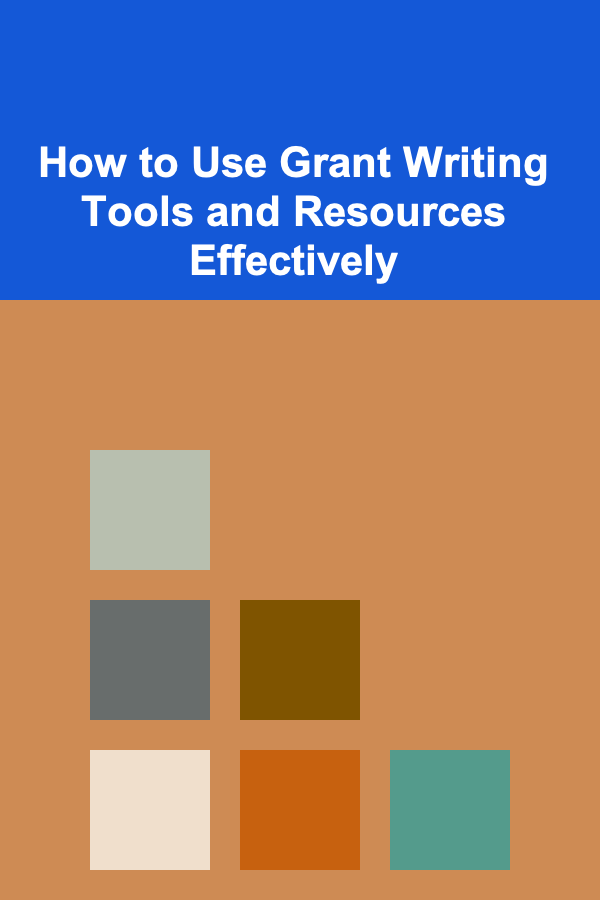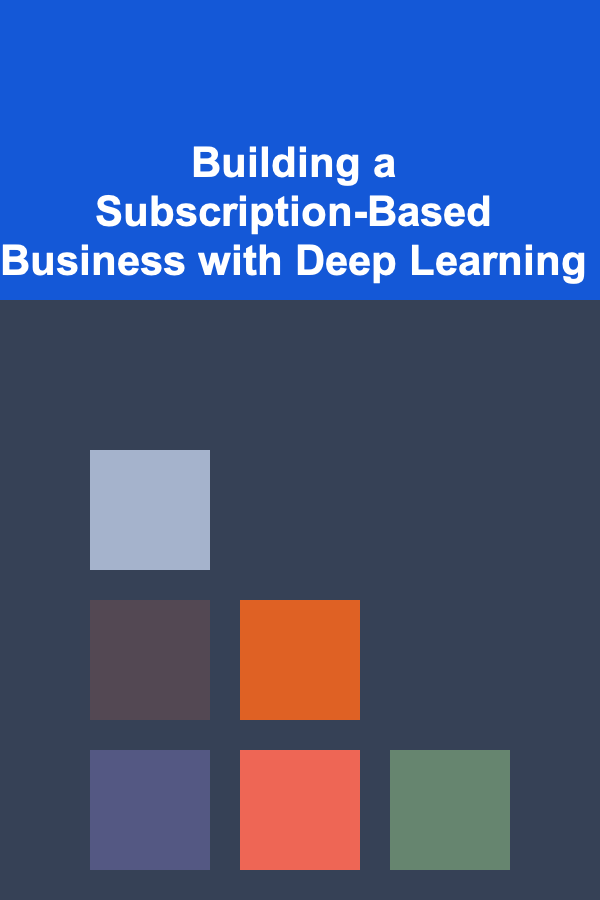
How to Use Grant Writing Tools and Resources Effectively
ebook include PDF & Audio bundle (Micro Guide)
$12.99$6.99
Limited Time Offer! Order within the next:

Grant writing is a crucial skill for non-profit organizations, researchers, community groups, and even for-profit companies seeking funding. The process can be time-consuming and complex, requiring attention to detail, adherence to guidelines, and effective communication. Fortunately, the emergence of grant writing tools and resources has made the task more manageable. In this guide, we will explore how to use these tools and resources effectively to enhance your chances of securing funding.
Understanding Grant Writing Tools and Resources
Grant writing tools and resources are designed to support writers by simplifying the process of finding, applying for, and managing grants. They include databases of available grants, software for writing and managing proposals, templates, and guides. These tools can help with everything from identifying suitable funding sources to structuring your application to meet funders' expectations.
Here are some key categories of tools and resources you can leverage:
- Grant Search Databases: Platforms where you can find grants that match your project's goals.
- Proposal Writing Software: Tools that help structure your proposal in a way that is both professional and persuasive.
- Grant Management Software: Platforms that help you manage the life cycle of a grant, from application to reporting.
- Templates and Checklists: Pre-designed formats that help ensure your application meets all requirements.
- Training and Educational Resources: Online courses, webinars, and reading materials that help build your grant writing skills.
Leveraging Grant Search Databases
Finding the right grant opportunity is the first and most crucial step in the process. Grant search databases simplify this by providing comprehensive lists of available funding opportunities, often with search filters to narrow your options based on specific criteria such as:
- Grant type (research, education, community development, etc.)
- Eligibility requirements (non-profit, for-profit, individual, etc.)
- Location-specific grants
- Industry or sector focus (health, environment, arts, etc.)
How to Use Grant Databases Effectively:
- Choose the Right Database : There are several databases available for different sectors. For example, GrantStation and Foundation Directory Online are excellent for non-profits, while Grants.gov is essential for U.S.-based federal grants. Choose one that suits your organization's needs.
- Refine Your Search: Use filters such as location, eligibility, or funder type to find the most relevant opportunities. Be specific with keywords related to your project or mission.
- Save and Organize Opportunities: Many platforms allow you to save potential funding sources. Keep track of deadlines, application requirements, and other relevant details.
- Set Alerts: Some databases allow you to set up email alerts for new opportunities that match your criteria. This feature helps you stay updated without constantly checking the platform.
Using Proposal Writing Software
Once you've identified a suitable grant, the next step is crafting your proposal. Writing a compelling proposal is essential for standing out from the competition, and using proposal writing software can streamline this process. These tools often include features such as templates, guidelines, and automatic formatting, which help you craft a polished, professional document.
Popular Proposal Writing Software:
- Grant Writer Pro: A software specifically designed for non-profits, it helps users navigate the complexities of writing proposals by providing step-by-step guidance.
- LivePlan: This tool offers proposal writing features as part of its business planning suite, making it a great option for for-profit businesses looking to secure grants.
- Submittable: Primarily known for streamlining submissions, it also offers features that can assist in preparing and reviewing proposals.
Best Practices for Using Proposal Writing Software:
- Use Templates Wisely: Templates can be a huge time-saver, but don't rely on them too heavily. Tailor each section to the specific requirements of the grant you're applying for. Funders want to see that you understand their objectives and that your proposal addresses them directly.
- Collaborate in Real-Time: Many writing software tools allow multiple team members to work on a proposal simultaneously. Use this feature to gather input from different stakeholders and ensure your proposal is comprehensive and cohesive.
- Pay Attention to Formatting: Consistent formatting and professional presentation are crucial in grant writing. Proposal writing software often comes with pre-set formats that align with grant funders' expectations, saving you time on manual adjustments.
- Track Progress: Some software comes with built-in task trackers and reminders, helping you stay organized and meet all deadlines.
Utilizing Grant Management Software
Grant management software helps you organize and track the progress of your grants from start to finish. These tools help you keep a record of applications, funding received, deadlines, and reporting requirements. Whether you're a small organization or managing multiple grants, these tools help ensure that no aspect of your funding process falls through the cracks.
Popular Grant Management Software:
- Fluxx: Known for its ease of use, Fluxx enables users to manage the entire grant lifecycle, including budgeting, reporting, and compliance tracking.
- Foundant: A versatile platform, Foundant allows both grantmakers and grant recipients to track grant progress, document milestones, and submit reports.
- GrantHub: Designed for non-profits, GrantHub offers a centralized place for managing your grant applications and deadlines, as well as generating reports.
How to Maximize Grant Management Software:
- Centralize Information: Use grant management software to keep all relevant documents, deadlines, and communication in one place. This reduces the risk of losing critical information and improves collaboration between team members.
- Track and Report Milestones: Once a grant is awarded, many funders require periodic reports. Grant management software allows you to track milestones and generate reports automatically, saving you time and ensuring you meet deadlines.
- Monitor Financials: Many grant management systems offer financial tracking tools, which allow you to monitor your expenses in relation to the grant's budget and ensure compliance with funding guidelines.
Making Use of Templates and Checklists
Templates and checklists are invaluable tools in ensuring that your grant proposal covers all necessary elements and adheres to the guidelines set by the funder. These resources help ensure that your application is complete and free of common errors that could lead to disqualification.
Types of Templates to Use:
- Budget Templates: Clearly outline your project expenses and demonstrate how grant funds will be allocated.
- Proposal Templates: These outline the key components of a grant proposal, such as the executive summary, project description, goals and objectives, and evaluation methods.
- Letter of Support Templates: Some grants require letters of support from community members or partners. Using a template helps ensure you provide all the necessary information.
Benefits of Templates and Checklists:
- Saves Time: Templates streamline the creation of documents that you need for your grant proposal, such as budgets or letters of support.
- Reduces Errors: A checklist ensures that you don't overlook any critical parts of the proposal, such as the required documentation or specific formatting guidelines.
- Ensures Consistency: By using templates, you can ensure that all proposals follow a consistent format and tone, which is crucial when applying for multiple grants.
Accessing Training and Educational Resources
Grant writing is an evolving field, and staying informed about the latest trends, best practices, and funder preferences is essential. Many organizations offer free or paid training materials, webinars, and resources that can help sharpen your grant writing skills.
Resources to Consider:
- The Foundation Center: Offers a range of training programs, webinars, and workshops specifically focused on grant writing.
- GrantSpace: Also run by the Foundation Center, GrantSpace offers webinars, guides, and articles on grant writing, fundraising, and non-profit management.
- Coursera and EdX: These platforms offer online courses from universities and institutions that can improve your grant writing skills.
How to Incorporate Ongoing Learning:
- Take Advantage of Free Webinars: Many organizations offer free webinars that cover specific aspects of grant writing, such as how to develop a compelling case for support or how to manage a grant once awarded.
- Join Grant Writing Communities: Consider joining online forums or local grant writing groups. These communities can provide support, advice, and feedback on your proposals.
- Read Case Studies and Success Stories: Learning from others who have successfully secured grants can help you understand what works and what doesn't.
Conclusion
Using grant writing tools and resources effectively can make a significant difference in your ability to secure funding. By leveraging grant search databases, proposal writing software, management platforms, templates, and educational resources, you can streamline the grant writing process and improve the quality of your submissions. Successful grant writing requires organization, strategic planning, and an understanding of the funding landscape. With the right tools in hand, you'll be better equipped to navigate this complex process and increase your chances of securing funding for your project.

Automate Your Passive Income Stream Using Deep Learning Techniques
Read More
Budget-Friendly DIY Home Organization Ideas for a Tidy Home
Read More
Building a Subscription-Based Business with Deep Learning
Read More
How to Invest in Real Estate with Little to No Money Down
Read More
How to Use Your Crafting Hobbies to Make Money
Read More
Is Renting or Buying Right for You? A Detailed Renting vs. Buying Comparison
Read MoreOther Products

Automate Your Passive Income Stream Using Deep Learning Techniques
Read More
Budget-Friendly DIY Home Organization Ideas for a Tidy Home
Read More
Building a Subscription-Based Business with Deep Learning
Read More
How to Invest in Real Estate with Little to No Money Down
Read More
How to Use Your Crafting Hobbies to Make Money
Read More